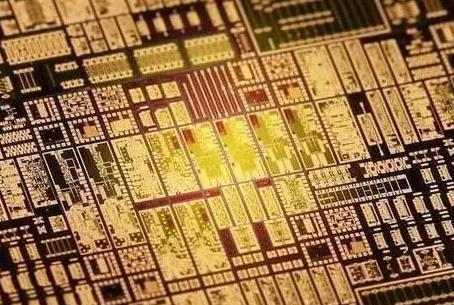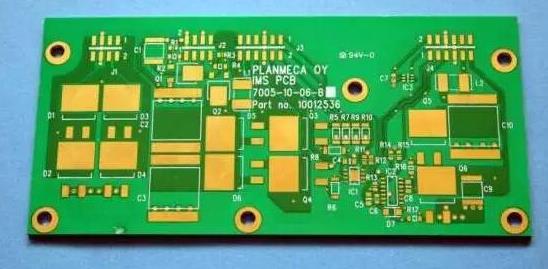Printed circuit board surface treatment
Anti-oxidation, tin spray, lead-free tin spray, immersion gold, immersion tin, immersion silver, hard gold plating, full board gold plating, gold finger, nickel palladium gold OSP: lower cost, good solderability, harsh storage conditions, time Short, environmentally friendly technology, good welding and smooth. Tin spray: The spray tin board is generally a multi-layer (4-46 layer) high-precision PCB model, which has been used by many large domestic communication, computer, medical equipment, and aerospace companies and research units. The gold finger is a memory stick. For the connecting parts between the upper and the memory slot, all signals are transmitted through golden fingers. The golden finger is composed of many golden yellow conductive contacts, because its surface is gold-plated and its conductive contacts are arranged like fingers, so it is called "golden fingers". The gold finger is actually coated with a layer of gold on the copper clad board through a special process, because gold has strong oxidation resistance and strong conductivity. However, due to the high price of gold, most memories are now replaced by tin plating. Tin materials have been popular since the 1990s. Also, at present, the "gold fingers" of motherboards, memory and graphics cards are almost all tin materials. Only some high-performance server/workstation accessory contact points will continue to be gold-plated, which is naturally expensive.

Why use gold plate
As the integration level of IC becomes higher and higher, IC pins become more denser. The vertical tin spraying process is difficult to flatten the thin pads, which brings difficulty to the placement of SMT; in addition, the standby life of the tin spraying board is very short. The gold-plated board just solves these problems:
For the surface mount process, especially for 0603 and 0402 ultra-small surface mounts, because the flatness of the pad is directly related to the quality of the solder paste printing process, it has a decisive influence on the quality of the subsequent reflow soldering. Therefore, the entire board is gold-plated. It is common in high-density and ultra-small surface mount processes. In the trial production stage, it is often not as soon as the board comes due to factors such as component procurement. Soldering, but often has to wait several weeks or even months before use, the standby life of the gold-plated plate is many times longer than that of the lead-tin alloy, so everyone is willing to use it. Besides, the cost of gold-plated PCB in the sample stage is almost the same as that of lead-tin alloy board. But as the wiring becomes denser, the line width and spacing have reached 3-4MIL. Therefore, the problem of short-circuit of the gold wire is brought about: With the frequency of the signal.The higher and higher the rate, the more obvious the impact of the signal transmission in the multi-plated layer on the signal quality due to the skin effect. The skin effect refers to: high frequency alternating current, the current will tend to concentrate on the surface of the wire to flow. According to calculations, skin depth is related to frequency.
Why use Immersion Gold Board
In order to solve the above problems of gold-plated boards, PCB circuit boards using immersion gold boards mainly have the following characteristics:
Because the crystal structure formed by immersion gold and gold plating is different, immersion gold will be golden yellower than gold plating, and customers will be more satisfied. Because the crystal structure formed by immersion gold and gold plating is different, immersion gold is easier to weld than gold plating, and will not cause poor welding and cause customer complaints. Because the immersion gold board only has nickel and gold on the pad, the signal transmission in the skin effect will not affect the signal on the copper layer. Because the immersion gold board only has nickel and gold on the pads, it will not produce gold wires and cause slight shortness. Because the immersion gold board only has nickel and gold on the pads, the solder mask on the circuit and the copper layer are more firmly bonded. The project will not affect the spacing during compensation. Because the crystal structure formed by immersion gold and gold plating is different, the stress of the immersion gold plate is easier to control, and for products with bonding, it is more conducive to bonding processing. At the same time, it is precisely because the immersion gold is softer than the gilding, so the immersion gold plate is not wear-resistant as the gold finger. The flatness and stand-by life of the immersion gold board are as good as the gold-plated board.

Immersion gold board VS gold-plated board
In fact, the gold plating process is divided into two types: one is electroplating gold, the other is immersion gold. For the gilding process, the effect of tinning is greatly reduced, while the tinning effect of immersion gold is better; unless the manufacturer requires binding, most manufacturers will now choose the immersion gold process. Generally, the surface treatment of PCB circuit board is as follows: gold plating (electroplating gold, sinking Gold), silver-plated, OSP, tin spray (with lead and lead-free), these are mainly for FR-4 or CEM-3 boards, paper base materials and rosin-coated surface treatment methods; Poor tin (poor tin eating), if you exclude solder paste and other chip manufacturers' production and material technology reasons.
Here is only for the PCB circuit board problem, there are the following reasons:
When the PCB circuit board is printed, whether there is an oil-permeable film surface on the PAN position, it can block the effect of tinning; this can be verified by a tin bleaching test. Whether the lubrication position of the PAN position meets the design requirements, that is, whether the pad design can sufficiently ensure the supporting effect of the part. Whether the pad is contaminated, this can be obtained by the ion contamination test; the above three points are basically the key aspects considered by PCB circuit board manufacturers. Regarding the advantages and disadvantages of several methods of surface treatment, each has its own strengths and weaknesses. In terms of gold plating, it can keep PCB circuit boards for a longer time, and the temperature and humidity of the external environment are less changed (compared to other surface treatments), and generally can be stored for about one year; secondly, the surface treatment of tin spraying, OSP again, These two surface treatments are stored at ambient
Temperature and humidity
A lot of attention should be paid to time. Under normal circumstances, the PCB board surface treatment of immersion silver is a bit different, the price is also high, and the storage conditions are more demanding, and it needs to be packaged in sulfur-free paper.